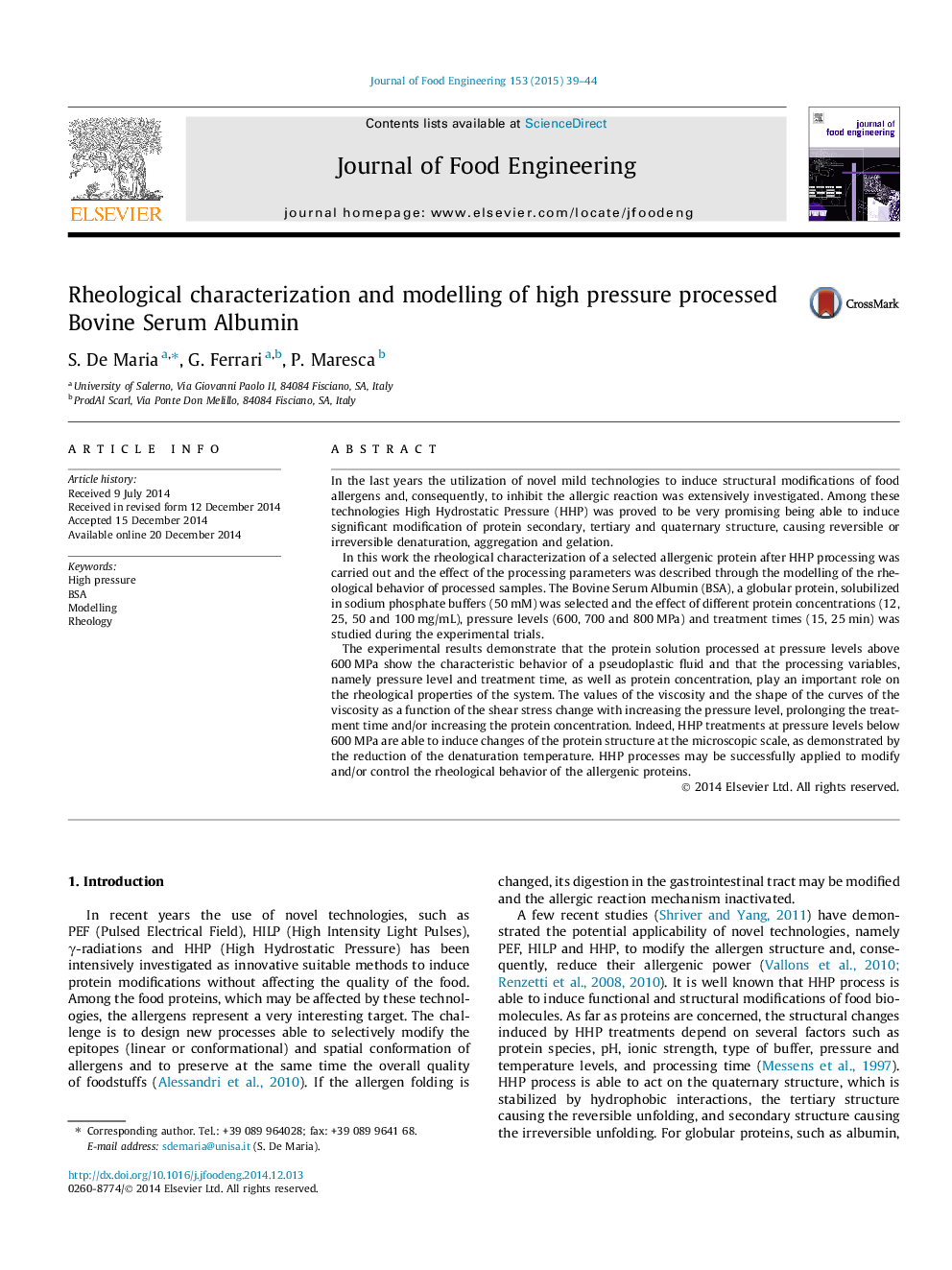| Article ID | Journal | Published Year | Pages | File Type |
|---|---|---|---|---|
| 222882 | Journal of Food Engineering | 2015 | 6 Pages |
•We studied the effect of HHP on rheological behavior of BSA.•Effect of high pressure is affected by protein concentration.•Viscosity is increased at higher values of pressure and treatment time.•Thermal denaturation temperature is anticipated if high pressure is applied before.•Deviation from Newtonian behavior is higher if high pressure treatment is applied.
In the last years the utilization of novel mild technologies to induce structural modifications of food allergens and, consequently, to inhibit the allergic reaction was extensively investigated. Among these technologies High Hydrostatic Pressure (HHP) was proved to be very promising being able to induce significant modification of protein secondary, tertiary and quaternary structure, causing reversible or irreversible denaturation, aggregation and gelation.In this work the rheological characterization of a selected allergenic protein after HHP processing was carried out and the effect of the processing parameters was described through the modelling of the rheological behavior of processed samples. The Bovine Serum Albumin (BSA), a globular protein, solubilized in sodium phosphate buffers (50 mM) was selected and the effect of different protein concentrations (12, 25, 50 and 100 mg/mL), pressure levels (600, 700 and 800 MPa) and treatment times (15, 25 min) was studied during the experimental trials.The experimental results demonstrate that the protein solution processed at pressure levels above 600 MPa show the characteristic behavior of a pseudoplastic fluid and that the processing variables, namely pressure level and treatment time, as well as protein concentration, play an important role on the rheological properties of the system. The values of the viscosity and the shape of the curves of the viscosity as a function of the shear stress change with increasing the pressure level, prolonging the treatment time and/or increasing the protein concentration. Indeed, HHP treatments at pressure levels below 600 MPa are able to induce changes of the protein structure at the microscopic scale, as demonstrated by the reduction of the denaturation temperature. HHP processes may be successfully applied to modify and/or control the rheological behavior of the allergenic proteins.
